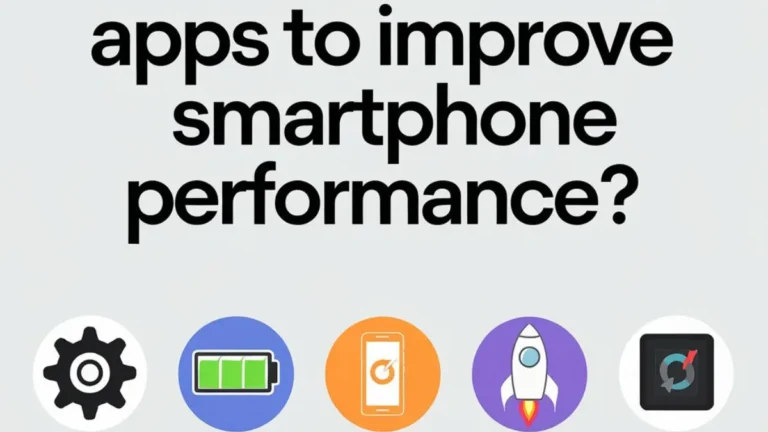Listen, I’ve seen this movie before. Three years ago, I sat in a claustrophobic co-working space, convinced our startup absolutely needed an app to compete. Jump to the present – I’ve created two profitable business apps and made plenty of costly mistakes in the process. If you are considering app development for business, then this is the place to be. It’s no longer child’s play in the mobile app market.
We’re talking about an industry of $579.56 billion in 2025 that is projected to grow to $626.39 billion by 2030. However, here’s the truth – investing cash into building apps sans a rock-solid game plan is tantamount to purchasing a Ferrari for delivering pizza. Oh, it’ll work all right — after you’ve burned through enough cash to make “minimum viable product” a dirty word.
Why Your Business Actually Needs an App (And When It Doesn’t)
Before we dive into the technical stuff, let’s get real about whether you actually need an app. I’ve seen too many founders jump into app development because their competitor has one, not because it makes business sense.
Your business probably needs an app if:
- Your customers are using mobile around the clock (90% of time on mobile is spent in apps, not websites)
- There is a requirement for push notifications or offline mode
- Sensitive information is precious and needs all the help with security it can get
- Your service takes advantage of features of the device such as camera, GPS or biometrics
Skip the app if you’re just trying to replicate your website. A progressive web app might be your better bet – cheaper, faster to deploy, and works across all devices.
The Real Cost Breakdown (From Someone Who’s Been There)
Here’s where most founders get blindsided. App development costs aren’t just about the initial build – they’re about the entire lifecycle.
Initial Development Costs
Based on my experience and current market rates, here’s what you’re looking at:
| App Complexity | Cost Range | Timeline | What You Get |
|---|---|---|---|
| Basic App | $30,000-$60,000 | 3-4 months | Simple features, basic UI |
| Medium Complexity | $60,000-$150,000 | 4-6 months | Custom features, integrations |
| Complex App | $150,000-$350,000+ | 6-12 months | Advanced AI, custom backend |
The cost breakdown typically includes discovery ($4,500-$8,000), design ($15,000-$30,000), development ($35,000-$75,000), QA testing ($8,000-$18,000), and deployment ($2,000-$4,000).
The Hidden Costs Nobody Talks About
Annual maintenance will consume around 25% of your overall development price. That’s not a nicety it’s the cost of staying competitive. Security updates, compatibility with operating systems (OSes), new features 18 and server expenses skyrocket.
My first app? I put aside $80,000 for development and took a $20,000 splat on unanticipated maintenance in year one. Watch and learn from my mistake – budget for the long game.
Technology Choices That Actually Matter
Cross-Platform vs. Native: The Real Decision
You’re gonna get advised to go native for “better performance” by everyone. But unless you’re making a heavy graphics game or AR app, cross-platform frameworks like Flutter or React Native will be your best friends.
The second app I made, I did in Flutter and it averaged 40% faster development than native with near native performance. The performance discrepancy is much less and you’ll save time and money.
The No-Code Revolution
Here’s a lesson I learned, and wish I would have been told much earlie – these no-code platforms can scale WAY more than you think at first glance. Bubble got a 4.00 in recent platform comparison between no-code platforms, and I’ve watched out of bubble startups go on to launch successful apps without writing any code at all.”
The era of no-code extends beyond simple apps. You can deploy full stack applications, connect with APIs and deal with advanced business logic. Instead of working up months-of-all-nighters as was the custom back in the day, it will only take 5-7 weeks thanks to them.
Building Your Dream Team (Without Breaking the Bank)
Essential Team Members
You need these roles covered, whether in-house or outsourced:
- Project manager (your sanity depends on this)
- UI/UX designer (users judge your app in 3 seconds)
- Frontend developer
- Backend developer
- QA engineer
Studies show that 60% of app development projects fail due to poor team structure. Don’t be part of that statistic.
Outsourcing vs. In-House: The Startup Reality
The reality? most startups cannot afford a full in-house team. Fifty seven percent of companies prefer outsource for new projects and it’s no mystery why.
Geographic arbitrage is real. Cost of Developing an App in India As mentioned earlier, cost of developing an app is estimated to range between $10k and $150k in India whereas it could go upwards of $50k to half a million dollars or more in the US. But, don’t simply go for the cheapest one – language issues and time zones can destroy your timeline.
Security and Compliance: Don’t Learn This the Hard Way
Mobile apps face over 60% of all digital fraud attempts. If you’re handling user data, payments, or sensitive business information, security isn’t optional.
Regulatory Compliance Essentials
Unless you work in coining, you will have to follow GDPR, CCPA and perhaps HIPAA or PCI-DSS. TikTok’s fine of €345m in 2024 demonstrates that regulators are not playing around when it comes to breaches of privacy.
You should start doing Zero Trust Architecture from day one. It ‘trusts no one’ (no user, no device) and uses constant verification. Sounds paranoid? Maybe. But that’s less costly than responding to a data breach.
AI Integration: Your Competitive Edge
The global AI-based applications market is expected to exceed $126 billion by 2025. This is also happening at a time when AI as a buzzword is no longer sufficient – it’s starting to become table stakes for business applications.
Begin with basic AI capabilities such as predictive analytics or personalized user experiences. They can massively increase the user engagement there and as you don’t have to a be PhD in machine learning to get them set up.
ROI Measurement: Metrics That Actually Matter
Key Performance Indicators
Track these essential KPIs:
- Daily Active Users (DAU) and Monthly Active Users (MAU)
- User retention rate (this is the big one)
- Average Revenue Per User (ARPU)
- Customer Lifetime Value (CLV)
- Conversion rates
Monetization Strategies
In-app ads will hit $390.04 billion in 2025, and in-app spending (i.e. for meaning specifically making purchases inside the app) is growing by a CAGR of 23% to reach $257.23 billion during the same period. But don’t rely on one ballpark – hybrid monetization is the direction smart startups are going.
Testing and Quality Assurance: The Make-or-Break Phase
90% of the populace leave the application if it is not bug-free or lacks performance. Your app must also perform perfectly across all devices, operating systems and network environments.
Spend some money on actual device testing not just simulators. The billions of smartphone permutations on the market mean that your app has to account for edge cases you didn’t even realize existed.
Marketing and App Store Optimization
But building the app is only half the battle. Whether or not you find yourself at the top of the rankings for your app, App Store Optimization has led to an average 12% increase in downloads where some companies have reached a maximum 450%.
(Read about some AI-powered keyword optimization and competitor research here). As the cost of acquiring users is expected to be down by 10 percent in 2024, organic growth via ASO is becoming more and more important.
Future-Proofing Your Investment
The mobile landscape changes fast. Multi-cloud strategies are being adopted by 89% of enterprises to avoid vendor lock-in. Plan for scalability from day one.
Consider emerging technologies like AR/VR (market expected to reach $97.76 billion by 2025) and blockchain integration for supply chain or identity verification features.
The Bottom Line
It’s not just about going mobile by creating an app for business in 2025 – it’s about gaining a competitive edge. But here’s what I’ve discovered: Winning is not contingent on who has the fanciest features or the fattest budget. It’s thinking about your users, making the right technology bets and planning 50 years out.
Begin with your business goals, not the technology. Prove your concept before you build it. And don’t forget to budget for maintenance and marketing, not just development. And don’t forget – the best app is the one your customers use.
Ready to bring your app idea to life? The opportunity is in the market right now, and with a little courage, your startup can carve out some piece of that $579 billion opportunity.




